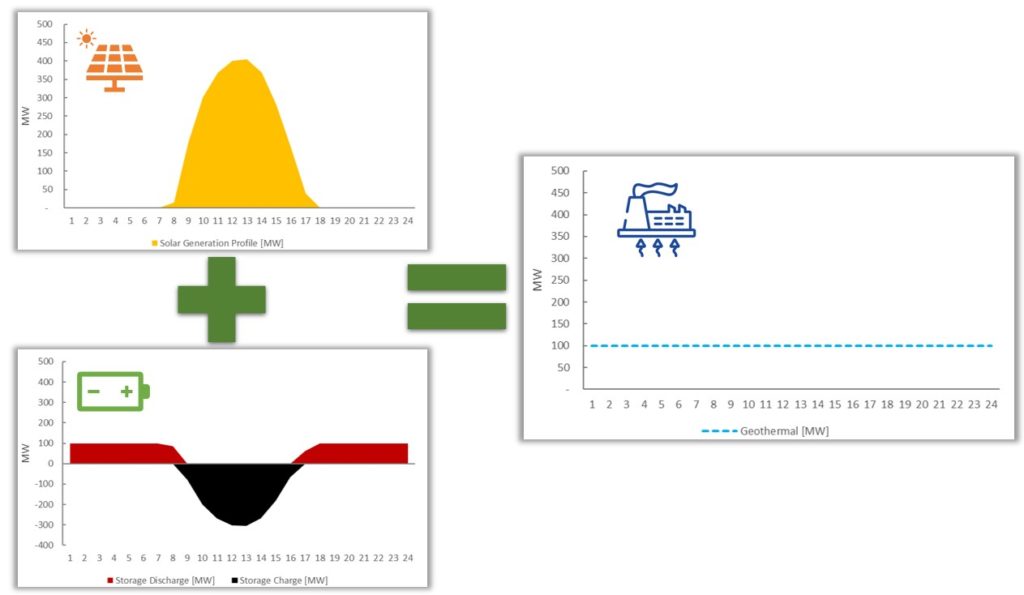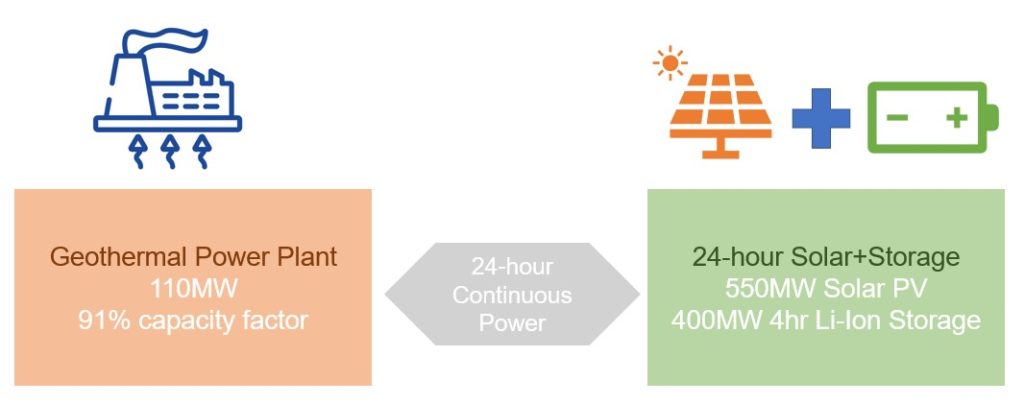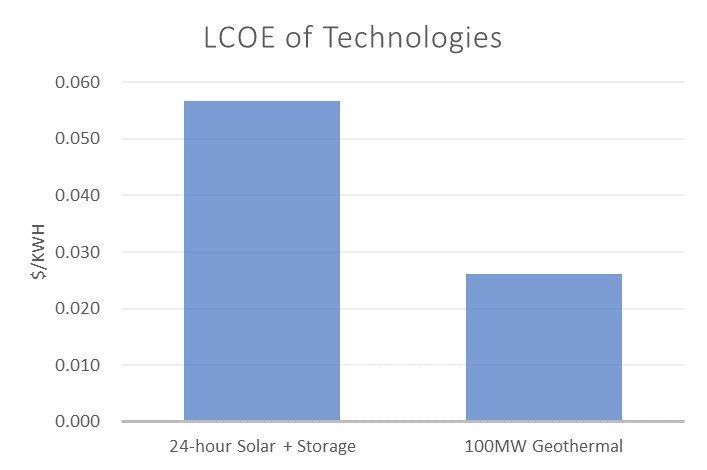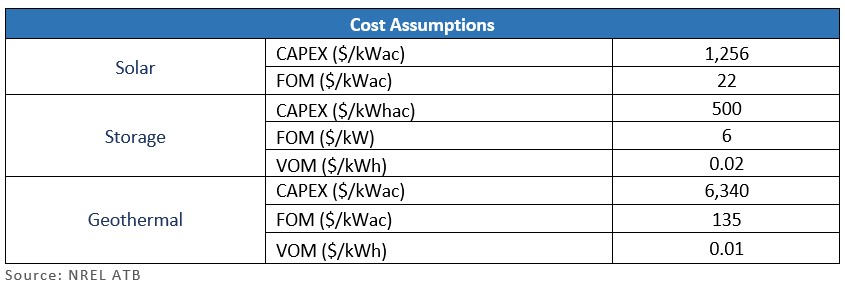Thermal baseload power plants are being retired however electricity demand still requires continuous constant power which is what the term “baseload” power refers to. The energy cost of geothermal power is compared to the energy cost of 24-hour solar plus storage power. The metrics used for this comparison are capital costs and the levelized cost of energy (LCOE) for producing continuous power of 100MW over one day with a 24-hour solar+storage project and a geothermal plant. A geothermal power plant is sized to provide a continuous 24-hour 100MW output. To match the same level of output, a hybrid solar+storage power plant is sized such that solar can generate enough power to charge the storage during sun hours and provide a continuous 24-hour 100MW output. The stored energy is then discharged for the remaining hours when the sun is not available as per the continuous 100MW output requirement. The following chart shows a typical 24 hours in a day with the constant output from geothermal and in comparison, solar+storage dispatch is shown where extra solar generation is used to charge the storage, and then that energy is discharged during the remaining hours.

A geothermal power plant of 110MW with a 91% capacity factor could produce an average of 100 MW constantly. For comparison, 24-hour Solar+Storage power must match the same level of output. If we assume that a location has an average of 8 sun hours, then for the remaining 16 hours, the storage will need a discharge energy capacity of 1600MWh for generating constant output of 100MW. To charge this storage, a solar capacity of at least 550MW would be required such that it can provide 100MW as well as charge storage. The figure below shows the equivalent sizing for comparison where 24-hour solar and storage sizing is based on a good solar day whereas for a poor solar day much more solar and storage is needed to produce equivalent energy to the geothermal production.

Now LCOE of an equivalently sized geothermal power plant and hybrid 24-hour solar+storage power is calculated and compared. For the calculations, forecasts of CAPEX and OPEX for grid-scale geothermal power plants, solar PVs, and Li-Ion Batteries are used. The chart below shows a comparison of the CAPEX forecast for geothermal power plants versus hybrid solar+storage systems. With new geothermal technologies such as closed-loop geothermal, there would be less risk in capital costs of drilling for project development.

LCOE is calculated with 20 years of forecast on continuous energy production for the 100MW output condition.

Assuming a WACC of 7%, PV values of total capital costs, fixed O&M, and variable O&M are calculated. In addition, the calculation model also includes annual degradation, fade, and augmentation. The calculated LCOE for geothermal and 24-hour solar+storage is shown in the table below.

The capital cost comparison shows that the 24-hour continuous solar plus storage is more expensive than the equivalent geothermal to produce the same amount of output where the geothermal is non-weather dependent clean energy and makes for a better baseload to supply demand requirements.
Assumptions:
The financial assumptions for LCOE calculation are provided in the table below. The WACC rate will be used while calculating present values of energy and costs. The Debt ratio determines the ratio of the loan over capital expense. The loan will be paid back during the debt payback period.

The cost assumptions for solar + storage and geothermal options are based on the Acelerex estimates and NREL ATB as shown in the table below.


